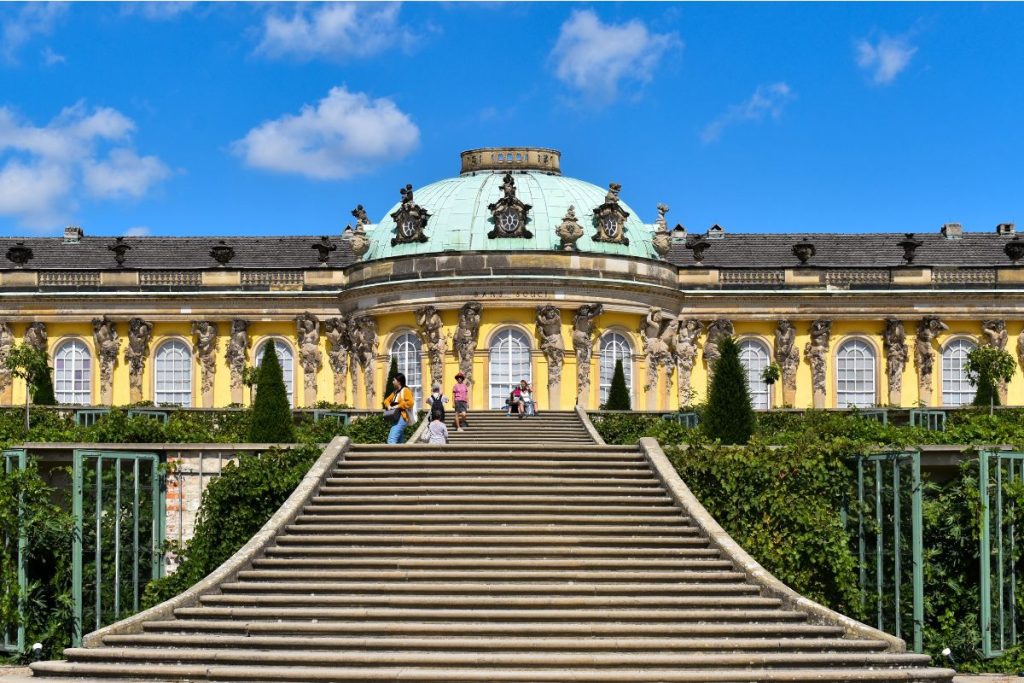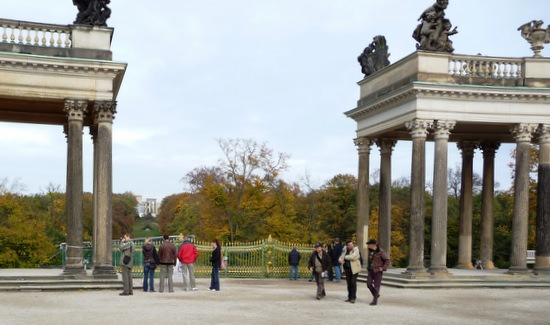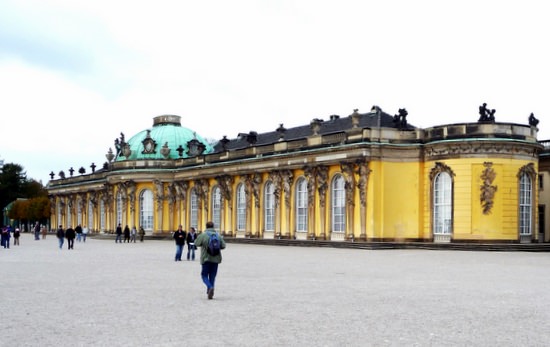Having visited the palace of Versailles in France, I had a feeling that I would not be impressed by King Frederick II’s Sanssouci Palace in Potsdam, Germany. Sure enough, when we pulled up to the old villa, I thought, well this is pretty good, but it isn’t so much. Then our tour guide told us that we were looking at the servants’ quarters.
Sanssouci is often referred to as Germany’s version of Versailles and it definitely lives up to the hype. If you love palaces and castles, add this to your Berlin itinerary!

King Frederick II (also known as Frederick the Great) lived during the 17th Century and united a significant portion of Prussia’s territory during his lifetime. He was known for being sensitive to the Enlightenment Movement while simultaneously ruling with ruthless authority. When he was a teenager, he tried to flee from his father in order to escape becoming king. However, he was captured and, as punishment, was forced to watch his childhood friend beheaded.

The grounds of the Sanssouci Palace are located outside of the city of Potsdam, which is located near Berlin, and you can get to it by bus, train or rental car. The grounds are so impressive and so massive that—if it is a nice day—they can consume an entire day (I recommend packing a picnic with a bottle of wine or two).
After I was told that I was looking at the servants’ quarters, we entered the palace grounds, which stretch for what seems like miles. Around every corner of the grounds we found gargantuan and beautiful feats of architecture as well as more polite gazebos and fountains. There are terraced gardens, ponds, a Chinese House, and multiple fountains that show Frederick’s love of ancient Greek artwork.

Another reason that the grounds feel so endless is that there are multiple buildings that served as palaces, notably the New Palace, which was built by Frederick simply to show off his power. The palaces display Rococo and Baroque architecture.
When we came to the official palace there was no mistaking it. Standing on a hill with intricate arbor of grapevines rolling down in front of it, the palace looked both cold and secretive, like a lost empire. The tour inside is worth the price. My favorite room is the room that King Frederick II had decorated specifically to the tastes of the writer, Voltaire. Dazzling beyond any verbal description, the walls are completely composed of gold that is shaped into nature scenes that include vines and life-size birds. The decorations are three-dimensional and jump out at you from all sides. The intricacy and deliberation of the work is awe-inspiring, and lends credit to the rumor that Voltaire and he were more than just friends. The fact that the poet—for reasons unknown—stopped visiting King Frederick II before the room’s completion, and in fact never saw the room himself, is a poetic tragedy on multiple levels.

After visiting the palace, I wandered along the ponds and fields around the palace with a head full of facts about the King’s life. Frederick the Great is thought to have lived a lonely life, and it didn’t take much imagination for me to picture him strolling alone along the banks of his massive ponds or rows of grapevines.

Jen Westmoreland Bouchard
Tuesday 29th of December 2009
"sans souci" is French for "without worry"- fitting!